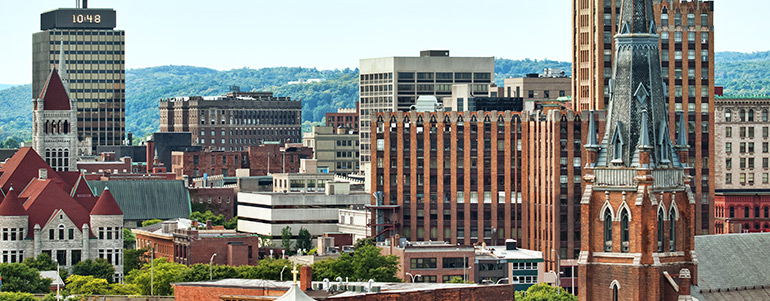
Syracuse Market Research Company
Drive Research doesn't only bleed passion for Voice of Customer (VoC), Customer Experience (CX), and market research. We call Syracuse home, so we also bleed orange. We enjoy seeing the outcomes and impact of our market research in our own backyard.
Looking for a market research company in Syracuse, NY? Our company offers a full range of qualitative and quantitative market research services. Although many of our clients are located in the Syracuse region and Central New York, our scope of business covers the country.
Interested in learning more about our market research services? Contact Drive Research today.
Syracuse Market Data
The Syracuse designated market area (DMA) is made up of the following counties. The data below details highlights from some of the market's key demographics including the population, households, income, housing, and employment.
Our market research company in Syracuse works with a variety of purchased data sources and custom solutions to provide our clients with the answers they need from those who matter most. Our services expand across both B2C and B2B segments.
Syracuse Designated Market Area (DMA)
The DMA is made up of the following counties in the Central New York area. These counties include:
- Cayuga
- Cortland
- Madison
- Oneida
- Onondaga
- Oswego
- Seneca
- Tompkins
Population
The 2016 population estimate in the Syracuse DMA is 1,014,830. The 2010 Census revealed a population of 1,015,966, and in 2000 it was 1,000,399 representing a 1.6% change. It is projected the population in this area will be 1,023,567 in 2021, representing a change of 0.9% from 2016.
The current population is 49.2% male and 50.8% female. In 2016, the median age of the population in this area was 38.8, compared to the Entire US median age which was 37.7. The population density in the Syracuse DMA is 190.0 people per square mile.
Households
There are currently 398,540 estimated households in the Syracuse DMA. The Census revealed household counts of 399,007 in 2010 and 384,015 in 2000, representing a change of 3.9%. It is projected the number of households in this area will be 405,924 in 2021, representing a change of 1.9% from the current year.
In 2010, the average number of years in residence in this geography's population is 15.0. The average household size in this geography was 2.4 people and the average family size was 3.1 people. The average number of vehicles per household in this geography was 1.8.
Income
In 2016, the median household income in this selected geography was $52,470, compared to the Entire US median which was $55,159. The Census revealed median household incomes of $49,304 in 2010. It is projected the median household income in this area will be $60,801 in 2021, which would represent a change of 15.9% from the current year.
In 2016, the per capita income in this area was $26,058, compared to the Entire US per capita, which was $28,088. The 2016 average household income for this area was $28,055, compared to the Entire US average which was $30,249.
Housing
The median housing value in this area was $79,942 in 2000. Compare this to the Entire US median of $110,813 for the same year. The estimated median housing value in 2016 in this area is $123,756. Compare this to the Entire US median of $190,673 for the same year.
In 2010 there were 90.0% owner occupied housing units in this area versus 90.0% estimated in 2016. Also in 2010, there were 0.3% renter occupied housing units in this area versus 0.3% estimated in 2016.
Employment
In 2016, there were 830,336 people over the age of 16 in the labor force in your geography. Of these 93.8% were employed, 6.0% were unemployed, 40.7% were not in the labor force and 0.2% were in the Armed Forces. In 2016, Civilian unemployment in this area was 6.0%.
In Q4 2016, there were 496,440 employees in this selected area (daytime population) and there were 32,324 establishments. For the Syracuse DMA in 2016, white collar workers made up 63.1% of the population, and those employed in blue collar occupations made up 19.2%.
Service and Farmworkers made up 17.8% of the population. In 2010, the average time traveled to work was 22 minutes.
